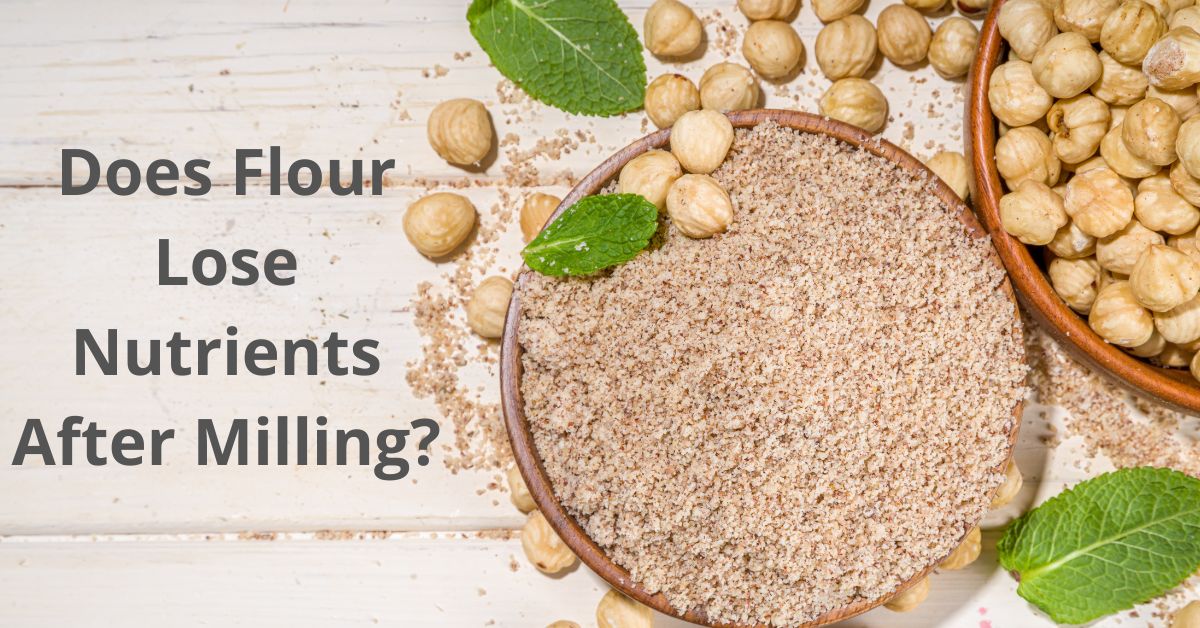If you enjoy baking, you’ve likely wondered if commercially milled flours lose nutrients compared to freshly milled options. With home flour milling growing in popularity, many bakers are exploring the nutritional differences between fresh and store-bought flours. Read on to learn if flour loses nutrients after milling.
Flour Nutrients
Whole grains like wheat berries contain abundant nutrients, including protein, healthy fats and oils, B vitamins, minerals like iron and magnesium, and antioxidants. When milling whole grains into flour, the goal is to retain as much of this original nutrition as possible.
However, several factors impact nutrient loss:
- Time and Exposure: Once milled, flour begins to slowly oxidise and degrade. Oils can turn rancid, and vitamin levels decline. Even when stored properly, nutrients decrease over time. Freshly milled flour has less time for oxidation or staleness to occur.
- Milling Method: How flour is milled affects nutrition. Fast, high-heat milling damages nutrients through friction. Cooler, slower stone grinding preserves more nutrients. Home mills allow customising the grind for minimal heat.
- Storage and Handling: How finished flour is stored and handled also affects nutrition. Oxygen, light, heat, and moisture all degrade flour over time. Proper storage in sealed containers in cool, dark places slows decline.
Fresh Home Milling Maximize Nutrition
Milling small batches at home minimises the time between grinding and baking. When flour is milled and used promptly, nutrient levels stay high. Home mills also allow for controlling the milling process to preserve nutrition. Quality home mills include:
- Electric grain mills for fast, automated milling
- Classic Waldner grain mills with fine-grinding stone burrs
- Mockmill grain mills with temperature-controlled stones
- Manual stone grain mills for traditional hand-cranking like Farina or Flocker
- Small-hand grain mills offering lightweight portability
For the freshest, most nutritious flour, many bakers are choosing to mill their own grains at home. Nothing beats the taste and nutrition of flour milled minutes before it goes into your oven.
How Long Does Freshly Milled Flour Last?
It’s best to use freshly milled flour as soon as possible. However, here are some guidelines for maximum freshness:
- Use within 1-2 days for peak flavour and nutrition, storing in an airtight container.
- For lighter flours, use within 5-7 days. Fats can oxidise faster in lighter flours.
- For whole wheat and heavier flours, use within 2 weeks. The germ’s oil has a shorter shelf life.
- Refrigeration can extend life by a few days, as the cold helps slow staling.
- Freezing flour in an airtight container preserves freshness for 1-2 months.
Ideally, mill only what you plan to use shortly. Date and label flour packages. If a rancid smell develops, flour has likely expired. With proper storage methods, fresh, home-milled flour can retain maximum taste and nutrition for your baked goods. Trust your senses, and enjoy flour at its freshest!




